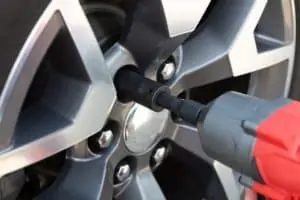Scheduling is key to Mobile Service success and much more difficult than scheduling in-house repairs. Providing mobile service and generating mobile service dollars requires a quality scheduling tool.
Brick and Mortar Appointment Scheduling
Dealer Service Appointment Scheduling Made Easy
Dealer Service Departments make money based on repair order (RO) size and volume, so the objective is to drive as much service traffic as possible. How does the shop appointment scheduling process do this? By making it convenient for the customer. No customer is turned away and there are many ways for customers to schedule an appointment – online, phone, or just showing up.
Service Department Customers Scheduling Expectations
Most customers want a simple process and a short wait time. Multiple surveys show that customers will accept a service appointment as far out as 5 days but are more likely to book service if a 2-day window is available.
Mobile Service Appointment Scheduling
Scheduling Complexity
Like in-house repairs, mobile service revenue is a function of RO size and volume. However, there are some additional considerations when scheduling mobile service. Some of the most important are:
- Route Management – Mobile service appointments should be close together to reduce drive time
- Repair Types – Defining the types of repairs and knowing the issues in advance are key to predictable repair scheduling, parts inventory management, and staffing
- Accessibility – Customer locations need to be screened in advance to make sure work can be performed safely
- Customer Access – Determining if the customer and vehicle will be immediately available when the technician arrives
Customer Scheduling Expectations
To make things more challenging, survey data show that customer scheduling expectations remain the same, whether for mobile service or in-house repair appointments. So mobile service customers will accept an appointment within five days but expect an appointment to be available within two.
Mastering Dealer Service Drive Scheduling
Proper Customer Scheduling Matters
Dealer Service Departments that don’t balance appointments and capacity run the risk of losing both customers and revenue. Over-scheduling leads to slow service times, poor survey results, and lost revenue. A balanced service drive will schedule for fast and efficient repairs while allowing the time and workflow needed to properly service drop-in customers.
Service Scheduling in the United States is Unique
Drop-in customers are unique to North America and the United States in particular. This makes scheduling in the United States more challenging than in other major countries. For example, customers in Europe, Australia, Canada, and other high-traffic countries schedule service appointments in advance, which allows for more predictable scheduling and a more controlled service drive.
The Repair Inspection Process
Customers are poor at diagnosing their own vehicles and describing the nature of failures. Instead, broad descriptions such as “Knocking Noise”, “Check Engine Light”, and “Losing Power” are offered to the Service Advisor and technician to help them identify the source of the complaint. And many customers are completely unaware of their vehicle’s repair needs when seeking scheduled maintenance.
So, dealer Service Departments offer Multi-Point Inspections and diagnostic services anytime a vehicle arrives in the service drive. This provides customers an ongoing view of the vehicle’s maintenance status AND offers dealerships the opportunity to schedule future appointments. However, if used improperly, Multi Point inspections can lead to extended service times and over-selling of repair services.
Mastering Route Scheduling
Proper Scheduling Matters
Mobile service providers must strike a balance between revenue and customer satisfaction. A mobile service unit can only service one vehicle at a time with drive time between appointments. So, the first appointment is generally on time, but the following appointments can be delayed if service and drive times are not properly managed. Since additional service considerations are determined onsite, they must be limited to quick, easy services. Failure to execute an appointment effectively can cause delays and risk revenue, profit, and customer satisfaction.
Customer Convenience
The primary appeal of mobile service is customer convenience and just as in the dealer Service Drive, convenience means fast, quality repairs. So creative solutions such as servicing multiple vehicles at a fleet location can help increase revenue and create a positive customer experience. There are, however, risks to this if not done properly. For example, parking a mobile service unit in a central parking lot for drop customers can cause customer issues if needed parts are not available or customers are over-booked.
Optimized Mobile Service Scheduling
Getting Started
Scheduling and route management is needed if a provider wants to offer customer convenience while maximizing revenue. Many service providers start out with a mobile service unit and a manual scheduling solution. A manual process can work at first. However, manual dispatching is difficult and requires constant monitoring and creates waste and is why professional delivery companies such as UPS, FedEx, Amazon and courier services use dispatch software for route management.
Define Your Offering
One of the major benefits of Mobile Service is customer satisfaction. And while scheduling for volume is key to profitability, a good Mobile Service solution will also offer residential repairs. So while servicing multiple vehicles at one location reduces, drive and setup time, it also:
- Takes a way an enhanced service for customers who are considering other repairers
- Keeps you from recapturing lost customers
- Eliminates a customer touchpoint that can help convert service customers into new car buyers
The Benefits of Purpose-Built Software
Traditional in-house scheduling software does not offer all the capabilities that are needed for mobile service dispatch. An efficient mobile service program optimizes scheduling, dispatching, AND routing. And manual processes or existing shop systems are not likely to deliver the same efficiency and profitability as a dedicated mobile service package.
Selecting a Solution Provider
Mobile Service solutions are starting to emerge in the market and some of the best solutions are leveraging existing technology and experience to get a jump on the market. By partnering with existing service providers, these companies have been able to offer a complete solution before the competitors. So before you sign up for a mobile service application, look for a complete service provider. A good solution will offer a full suite of capabilities including:
- Complete Service Provider: Look for a service provider who can supply both the physical repair unit and the dispatch solution
- Dispatch Planning: Workflow optimized scheduling for maximum efficiency
- Dynamic Route Management: A good dispatch software will absorb dispatch day complexity and keep the driver efficient and on schedule
- On Site Inspection Tools: Taking 5 minutes to inspect a vehicle helps increase profitability and set future appointments
- Parts Inventory Management: To ensure parts are on the vehicle to service scheduled and related repairs
- Customer Communication: Keeping customers up to date improves customer satisfaction and technician efficiency
- Invoicing Processes: Offering a defined accounting process helps improve financial accountability and profitability
Mobile Service Providers such as AutoUtility provide a full complement of required services.
Mobile Service Success Strategies
There are many case studies for mobile service success with success always including a quality service unit, effective driver management software, a clear and defined strategy and persistence. Some dealers in larger metros focus on fleet customers where they can service many vehicles from one location; others travel to customer workplaces and homes to service vehicles; while others offer a hybrid model. The model you choose will depend upon your market and your opportunities. So before you get started, interview service providers successful dealerships and learn first-hand from their experience.
If you are thinking about starting a mobile service offering for your dealership, this article offers further recommendations to consider.






